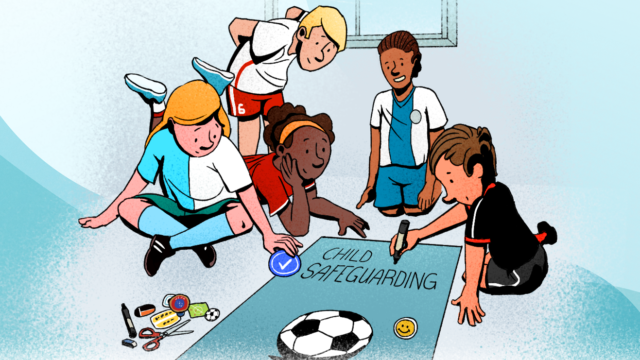Beautiful Village
Instruction:
1. Present What a Mediator Does. Go through it briefly as a class. Give learners a photocopy or write it on the board and ask them to take notes.
2. On a blank screen or print out and present the conflict diagram to the learners. Draw this diagram on the board or you can draw it on a large piece of white paper as it is a longer activity and may take more than one class period. Make the diagram as big as possible.
3. Tell the students that they are now going to act out a conflict that took place on the south coast of Turkey. It is about building a huge holiday complex. Some people want the complex to be built, others want it not to be built. The mukhtar calls for a meeting of the parties involved to come to an agreement. Write the names of the conflicting parties (names of characters 1-4) on the diagram on the board.
4. Cut out the role cards. Divide the class into five groups. Distribute role card 1 to the first group to portray Ali/Aliye Zenginobuz, role card 2 to the second group to portray Emin/Emine Huzurgil and so on.
5. As a group, they should find out the needs and concerns of their characters. Needs are things you want or need. Concerns are things you are worried about or fear might happen, Minimum Expectations are things you can accept without being completely satisfied.
Note to trainer: For example, the environmentalist may agree to save all the Gulluk trees and all the turtles but only 75 per cent of the other trees.
Character 5 Can/Candan Doğruel will be the mediator. In this group, learners should discuss how they would manage the meeting by studying appendix 6.4c. They should also analyse the whole situation by reading all the role cards.
Note to trainer: 1) The mediator is the only one who can read all the other cards. 2) Sometimes needs and concerns may overlap. This is not a problem!
6. After the groups have finished their preliminary work, a representative from each group will add the group's conclusions to the diagram on the board.
7. Then lead a discussion analysing the diagram using the following questions:
a. Is there a common need and concern?
b. Is there a new view?
c. Are there hidden needs and concerns that no one talks about?
d. Which areas might be easier to solve?
e. Which areas may be more difficult to solve?
f. Which minimally acceptable solutions do not contradict each other?
g. Does no one seem to have an intense desire to resolve this conflict?
h. In which areas do you need more information?
8. Now regroup the students by having them count from 1 to 5 in each group. Let all the ones in the different groups form a new group, all the twos form another new group, and so on with the other numbers forming other new groups. You should now have new groups with a representative of each character: a business person, an environmentalist, an unemployed youth, a pensioner and a mediator. If there are extra students, they can become reporters.
9. Now they should imagine that they are at a public meeting that will decide the fate of Dalyan. They will act out their roles and try to find a solution satisfactory to all parties.
10. Point out that for a conflict to be resolved, the needs and concerns of each party must be met at least minimally. In the long run, if the needs of any party are ignored, this will prolong or even escalate the conflict. Ask the students to look at the conflict from this perspective and see if they can find a solution.
11. Groups share their solutions with the class.
12. Discuss: Which solution was the most successful? Why? Have the mediators from each group share with the whole group how the process went, the difficulties they faced, etc. Note to trainer: Possible solutions.
Note to trainer: Possible solutions could include building a boutique hotel (a smaller hotel with less damage to the environment) or an ecotourism hotel (a hotel where tourists can turn off the lights at night and observe baby turtles reaching the sea) or a hotel without a disco etc.
Method Details
This method addresses
Added by
Contact with the Author
Beautiful Village 0 reviews
Login to Write Your ReviewThere are no reviews yet.
Write Your Review
Related Listings

-
In Person Training
-
minimum 20 people who are divided in 2 groups, Up 20
-
40-120 minutes depending on depth of discussion















